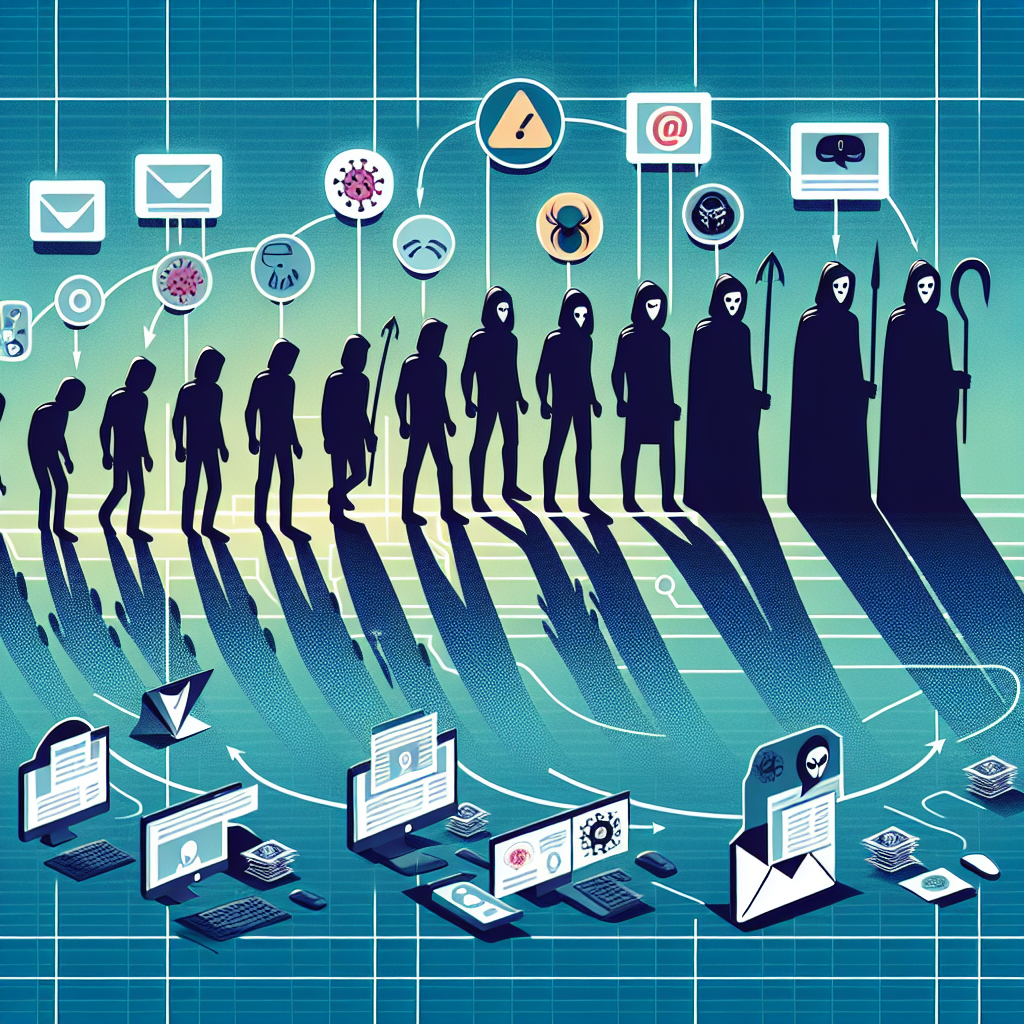
The internet is a maze of both opportunity and deception. Over the years, the landscape of online scams has changed dramatically. From innocent clickbait to sophisticated cyberthreats, understanding this evolution is crucial.
Contents
Clickbait: The Beginning
Clickbait is the initial spark in the world of internet scams. These sensational headlines lure users into clicking links. Often, they lead to ads or low-quality websites.
The Psychology Behind Clickbait
-
Curiosity Gap: Clickbait creates a curiosity gap that urges users to seek more information.
-
Emotional Triggers: These headlines often play on emotions such as fear or excitement.
Impact of Clickbait
While not inherently malicious, clickbait wastes time and misleads users. Ad revenues may thrive, but trust declines.
The Rise of Phishing
Phishing scams emerged as a more pernicious threat. They mimic legitimate sites to steal sensitive information like passwords and credit card details.
Techniques Used in Phishing
-
Email Spoofing: Attackers forge email headers to look trustworthy.
-
Website Cloning: Creates replica sites to deceive users.
Dangers of Phishing
Phishing can lead to identity theft, financial loss, and privacy breaches.
Social Engineering: A Deeper Threat
Social engineering manipulates human psychology to gain unauthorized access. It’s more personal and intricate than phishing.
Common Social Engineering Techniques
-
Pretexting: Creating a fabricated scenario to extract information.
-
Baiting: Enticing victims with something desirable.
Why Social Engineering Works
-
Overtrust: Humans tend to trust others, making manipulation easier.
-
Information Overload: In the digital age, it’s easy to get overwhelmed and lax about security.
Malware: From Annoyance to Deadly
Malware, once a mere inconvenience, has transformed into a potent threat. Today, ransomware attacks are commonplace. They can cripple businesses by holding data hostage.
Types of Malware
-
Viruses: Attach to clean files and spread.
-
Ransomware: Locks data until a ransom is paid.
Protecting Against Malware
-
Antivirus Software: Essential for detecting and removing threats.
-
User Awareness: Educating users reduces the risk of infection.
The Emergence of Cyber Threats
Cyberthreats are the evolved predators in this digital jungle. They target individuals and corporations alike.
Categories of Cyber Threats
| Threat Type | Description | Examples |
|---|---|---|
| DDoS | Overwhelms services to cause outages | Service disruptions |
| Hacking | Unauthorized access to systems | Data breaches |
| Espionage | Stealing sensitive information | Corporate spying |
Recent Developments
Cyberthreats evolve rapidly. New threats emerge as technologies advance. IoT devices and AI create fresh vulnerabilities.
In-Depth Questions and Answers
What makes clickbait effective yet detrimental?
Clickbait thrives on human curiosity and emotional response. We’ve all been there—scrolling through social media and stumbling upon a headline that piques our interest. These headlines promise revelations or insights, making us crave that click. However, the efficiency of clickbait can be its downfall. People quickly realize they’re being duped, leading to frustration and loss of trust. It’s a balancing act between clever marketing and user deception.
How has the increasing complexity of scams impacted user trust?
As scams become more complex, user distrust grows. Remember the early days of the internet? Trust was a given. But as scams grew sophisticated, the trust crumbled. Phishing emails are now indistinguishable from legitimate ones. Social engineering preys on the friendly nature of people. This constant need to question every interaction raises skepticism and caution. As a result, users are now wary and question even genuine communications.
What steps can individuals take to protect themselves from evolving cyber threats?
Protecting against cyberthreats involves a mix of vigilance and technology. First, always be skeptical of unsolicited communications—whether it’s an email, a phone call, or a social media message. Use complex passwords and change them regularly. Install reliable antivirus software and keep it updated. And remember, if an offer sounds too good to be true, it probably is.
The Future of Internet Scams
Scams will continue to evolve as the internet expands. As systems grow more secure, scams become more sophisticated. It’s a continual cat-and-mouse game.
What Can We Expect?
-
AI Integration: Scams using AI will be more personalized and harder to detect.
-
Increased Regulations: Governments may develop stricter policies to protect users.
-
Enhanced Awareness: As scams get smarter, so do users.
How to Stay Informed
Remaining informed is the best defense. Stay updated with recent articles and read about internet scam evolution. Keeping yourself educated helps anticipate new threats and defend against them.
Conclusion
The evolution of internet scams is a fascinating yet unnerving journey. From simple clickbait to complex cyberthreats, it’s a testament to human ingenuity—both good and bad. Being aware of the risks and staying informed is the best armor against these digital deceits. As we continue to rely on technology, understanding this evolution becomes even more crucial. Remember, in the digital world, caution is your greatest ally.
For further insights, visit investmentshoax.com for more on clickbait, phishing, and evolving cyberthreats. Stay sharp, stay safe!






